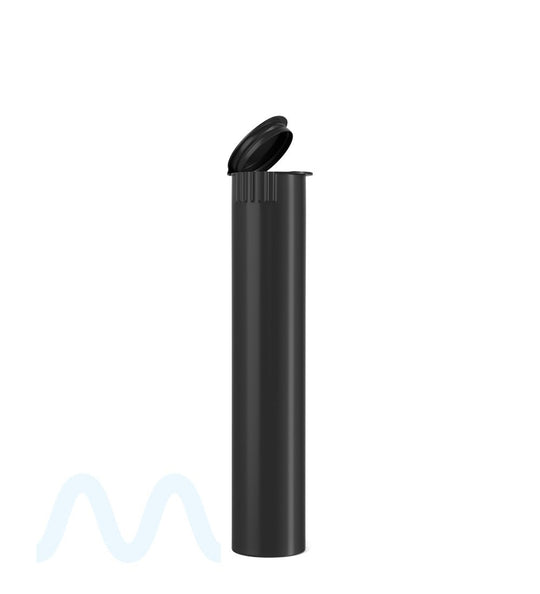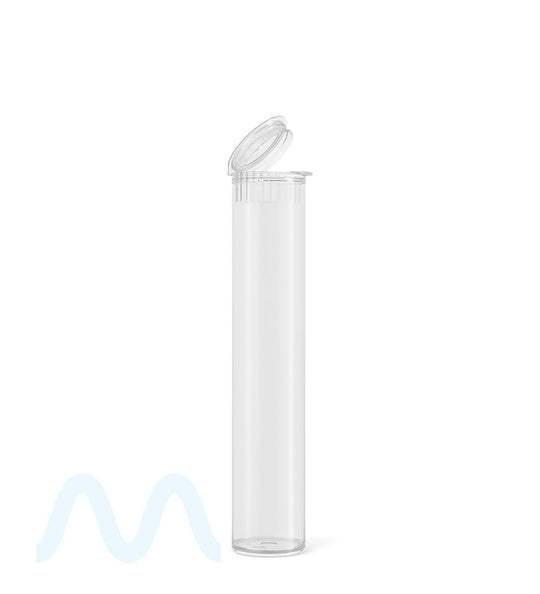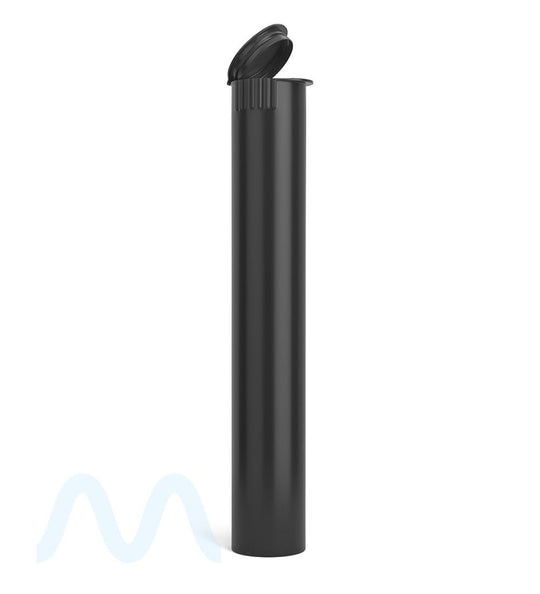Biodegradable Pre-Roll Tubes

The Industry is one of the fastest-growing sectors in the country and with more and more states preparing to vote on legalization, the market is expected to see a tremendous boom in new businesses, product demand, and sales. As it stands, the industry uses more than a billion units of plastic every year and that number is expected to continuously rise. Many earth-conscious companies are now implementing measures to offset plastic packaging and ensure the...
Frequently Asked Questions About
How do you identify the differences between biodegradable packaging and compostable packaging?
Though biodegradable and compostable packaging is infinitely better for the environment than your degradable bags and boxes, there are a few differences between them. Biodegradable packaging contains microorganisms that help break down plastics into the Earth and turn it into carbon dioxide, water vapor, and organic material. They break down anywhere between a few months to years -- a far better option than degradable plastic’s 1000-year breakdown time. The foundation of compostable packaging is natural plant starch that breaks down through microbial activity. The process creates compost, which breaks down easier. Compostable material is the superior option for packaging; biodegradable materials are still significantly better for stores to aid in their mission to reduce the amount of waste they produce.
Why does my company need biodegradable packaging?
As the industry feels the effect of climate change firsthand, such as wildfires that are sweeping away crops, there’s a more significant responsibility on the shoulders of businesses to address the harm done to the environment. Biodegradable packaging is an excellent option for companies looking to bring green solutions to their shops. You can replace single-use bags, pop-top tubes, and other packaging types with biodegradable packaging. Not only is this a huge selling point among consumers nowadays, but it’s also a cost-efficient option. Your business will benefit in several ways by adapting biodegradable packaging into your everyday operations.
How are biodegradable materials used for regulated packaging?
The materials used for biodegradable packaging for flower vary from each product, but generally, they use biopolymers. For example, our 95mm biodegradable pop-top plastic tubes for pre-rolls are a product of new technology that meshes together plant-based carbohydrates, naturally sourced glycerin, and synthetic polymers. Biopolymers are molecules like cellulose and proteins found in living organisms. Biopolymers allow for safe consumption and produce packaging that doesn’t harm the environment, like single-use bags. Most times, biodegradable packaging utilizes material from waste plant products to bring better materials for the environment.
Are there customization options available for biodegradable packaging?
Customization options are available for biodegradable packaging, just as for bags, jars, and tubes. The process begins when you fill out a form and submit it to our website. From there, we will give you a call within 24 to 48 hours with a quote. Once approved, we get straight to work. Even if you don’t have a design for your company or are looking to get your logo revamped, our exceptional team of in-house designers will help bring your vision to life. Plus, we have quick turnaround times to ensure your business has its order. Customizing biodegradable regulated packaging is a great way to add personality to products and attract new customers.

The Industry is one of the fastest-growing sectors in the country and with more and more states preparing to vote on legalization, the market is expected to see a tremendous boom in new businesses, product demand, and sales. As it stands, the industry uses more than a billion units of plastic every year and that number is expected to continuously rise. Many earth-conscious companies are now implementing measures to offset plastic packaging and ensure the industry does everything it can to reduce its annual waste, rather than escalate it. This has led to the production of greener alternative products, such as biodegradable packaging tubes, biodegradable bags and various more biodegradable solutions.
In recent years, pressure has been put on businesses, processors, and distributors by consumers who want to see an increase in biodegradable, recyclable and any other ecological product lines that will help us in saving our planet. However, a large portion of the population still struggle to understand exactly what these products are, how they are made, and the overall impact they will have. So, we took the initiative in breaking down a detailed explanation of what exactly biodegradable is, sustainable regulated packaging materials, biodegradable packaging tubes and other biodegradable products that are now being integrated into the industry.
What is Biodegradable?
Biodegradability is when organic matter gets decomposed (broken down) by microorganisms such as bacteria and fungi that interact with abiotic factors including UV light, oxygen, and temperature, among other elements. The reaction between bacteria and microorganisms is spurred by their introduction to humidity, induced by hot temperatures, as high as 300F. Biodegradation can happen anywhere from a few weeks, to a few months, even up to two years. However, the rate of degradation is much quicker than fossil-based plastic which can take 900 – 1000 years to decompose. The biodegradation process leaves no hazardous materials or chemicals behind since all the organic matter gets assimilated back into the environment.
How Biodegradable Products Are Made
Since their inception, bioplastics have played a major role in facilitating a greener environment for the world we live in. Biodegradable materials are usually obtained from sugar derivatives including cellulose, wood, and starch. The composites made up of these materials ensure that the formation of bioplastics will ultimately advance sustainability since they do not contain fossil fuels. Biodegradable packaging materials are forged into a solid compound after they are melted down and poured into molds of various-shaped products, such as biodegradable packaging tubes. Biodegradable products are created to partially or fully dissolve when they encounter living organisms and naturally decompose into the environment.
a) Hydrocarbons are fossil fuels that can be turned into plastics by polymerizing chains of hydrogen, carbon, oxygen, and other molecules.
b) The bonds between these molecules give the bioplastic strength and provide energy for renewed use when bonds are broken during the diffusion process
c) Carbohydrates, such as carbon, hydrogen, and oxygen-based structures, are transformed from plants into polymer resins and eventually, biodegradable materials
d) The polymer resin then undergoes a reactive extrusion process and is fused with other plastic compounds
e) The end results are 100% biodegradable resin that is injection molded to take the shape of the product you desire.
What are Biodegradable Materials?
The global biodegradable plastic market is projected to grow from $17 billion this year to almost $44 billion in 2022. This trend is a response to the detrimental effects we are now seeing as a result of plastic waste; including but not limited to, excessive litter, pollution, and climate change. Biodegradable regulated packaging is made from natural materials like biopolymers, all-natural plant extracts, carbohydrates, starches, and glycerin. As a result, biodegradable containers are a viable solution to the calamities caused by plastic waste.
A. Biodegradable Plastics
There’s more than one type of biodegradable plastic, derived from different material compounds resins, which are dependent upon the desired end of life objective. The manufacturing of bio-based plastics has shown little to no impact on nearby eco-systems where they are produced. Biodegradable products can be broken down into non-toxic residues that are better for soil fertility and have been found to produce 70% less greenhouses gases than plastics sitting in large landfills.
B. Biodegradable Hemp
Hemp plastic is an unrivaled eco-friendly product that can be recycled, as well as biodegraded. Currently, biodegradable hemp is the most suitable alternative to regular petroleum-based plastic. Considering the fact that the global thirst for plastic material is unquenchable, biodegradable hemp packaging serves as a good substitute because hemp is a renewable resource. There are three types of bioplastics that can be derived from hemp; these include composite hemp bioplastic, cellulose hemp bioplastic, and pure hemp bioplastic. When compared to petroleum-based plastic, hemp is 5 times firmer and 3.5 times stronger.
Other biodegradable regulated packaging materials that are widely used in the biodegradable packaging industry include:
- Cotton
- Hides
- Paper
- Wood
- Jute
Best Biodegradable Packaging
A report compiled by New Frontier Data indicates that the packaging sector employs more Americans than the coal industry; this goes to show how profitable the industry is. However, those profits reflect the amount of packaging that has gone into meeting product demand by consumers. Subsequently, many businesses are opting for sustainable packaging as a solution for buying and selling their regulated products, in an effort to help save the planet's ecosystems.
Biodegradable Packaging Tubes
These are products made using biodegradable plastics and plant-based polymers. Some of the raw materials used to make biodegradable packaging tubes include starch, cellulose, polylactic acid (PLA), polycaprolactone (PCL), and polyhydroxy butyrate (PHB), to name a few. Moreover, our child resistant bioplastic packaging tubes are made with bio blend resins and are some of the first sustainable products available to the industry!
Biodegradable Bags
Biodegradable bags are made from oxo-biodegradable plastic, which is made by blending a pro-degradent additive during the extrusion process and will then break down when exposed to sunlight. Biodegradable bags also contain additives and plant products that help them break down quickly and efficiently. Exit bags and mylar bags are just beginning to be produced with biodegradable material, while still retaining full functionality and child resistance.
Biodegradable Boxes
Another way to safely store regulated products is through the use of biodegradable boxes. These are mostly made from cardboard, which can be broken down by various decomposers and easily absorbed back into the soil. The state of the cardboard, whether it’s dirty or covered in residue when it is disposed of, will ultimately determine the effectiveness and rate of decomposition.
Biodegradable Packaging Cost and Benefits
As of 2014, the volume of bioplastics was 0.2% of the total global polymer market which stood at 300 million tons. Biodegradable plastics have the potential to replace typical petroleum-based plastics; nevertheless, factors such as cost of production have proven to be challenging. The monetary investment entrepreneurs have put into biodegradable technologies has been significant, although, scientists are confident that it will be paid back tenfold once people begin to witness the payoff it has for businesses, as well as the environment.
Generally, the usage of bioplastic is financially favorable, but their usage has been hindered by government regulations that favor petroleum-based plastics. Still, countries like Italy have amended their laws and now require biodegradable regulated packaging plastic bags to be in use instead of the conventional petroleum-based plastics. Such legislations will help promote the use of bioplastics and eventually cut the cost of production.
Benefits of Biodegradable Packaging
- Consume less energy during production
- Contributes to the reduction of greenhouse gas discharge and carbon emissions
- They do not release harmful chemicals when they decompose.
- Reduces the usage of water thus proving to be economical
- Significantly reduces waste production
- Biodegradable packaging facilitates the convenient disposal of materials
- Helps businesses to attain profitability by reducing their cost of production
- Biodegradable regulated packaging contributes positively towards a brands image
- It helps a company to reach new customers who prefer to use green products
What to Do with Biodegradable Packaging OR (How to Properly Dispose of Biodegradable Packaging Materials)
Contrary to what most people think, simply disposing of biodegradable packaging materials in the trash can or recycling bin isn’t appropriate. Non-biodegradable regulated packaging products are usually disposed of through various waste collection bins, but that does not apply to biodegradable materials because they have a specified disposal process. On the flip side, the main function of biodegradable packaging is to facilitate the use of long-term alternatives; ergo, to fully achieve this goal, bioplastic products must be properly discarded and we will walk you through how that can be achieved.
Steps to Disposing Biodegradable Packaging Products
- Once the biodegradable regulated packaging fully serves its purpose, it should be disposed of in a properly identified bio-waste bin
- The biodegradable packaging material is then taken away and transported to a bioreactor landfill or bio-waste facility
- Once the material has undergone organic biodegradation, it can be used to produce renewable energy
Another important factor to consider in relation to biodegradable regulated packaging material is this; just because an item is classified as a biodegradable product doesn't necessarily mean it will decompose under any environment. This is why some bioplastic can't decompose at home; therefore, the proper way to go about it is by following the outline provided above.
The benefits of using biodegradable packaging are boundless; besides saving the environment, biodegradable containers also help a company boost its brand recognition and credibility. When it comes to plastic use, it is important to recognize how destructive our habits have become because we are all guilty of overindulging and taking for granted how easy it is to use a plastic product once, throw it away, and not consider the consequences once it is out of sight. If we can all work together to utilize more biodegradable and ecological products, we will all be able to reap the benefits of a brighter future.
Be sure to check out our blog if you want to learn more about biodegradable vs compostable packaging and how you can increase the efficiency of your dispensary using biodegradable regulated packaging materials.














